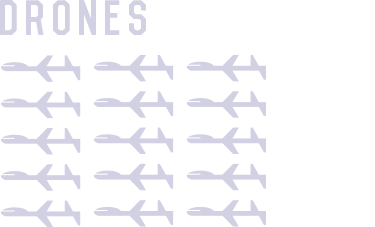


The F-35 Joint Strike Fighter is the most expensive military weapons program in human history. But what does that mean? If you factor in the full cost of maintaining a fleet of aircraft for 56 years, the price of an individual fighter is more than $670 million. That’s literally worth more than its weight in gold.
A March Government Accountability Office report offered a different tabulation: “If F-35 procurement plans remain unchanged and developmental testing continues into 2018, the cost risks associated with concurrency will likely increase as DOD expects to have invested $83.4 billion in 459 aircraft by that point in time.” Some $83 billion spread over 459 aircraft works out to around $180 million per plane. Lockheed Martin, the aircraft’s manufacturer, says it can get the cost down to about $85 million per plane by 2019 as it fills more orders.
The F-35 as an aircraft and defense program has been widely criticized for its cost overruns and growing price tag. But as a unit of speculative currency, it’s more interesting. Consider it this way: What other technologies could the military buy for the cost of a single F-35, using GAO’s March estimate?
Some of the areas that we don’t commonly associate with big defense but that do represent national security concerns include epidemiology, fresh water availability, energy, global literacy and education, and automation. These also happen to be areas where relatively small investments could yield big returns, particularly for the Defense Department.
It’s an eclectic group, so Government Executive reached out to a wide-ranging thinker for a few back-of-the-envelope calculations on the cost of a major technological breakthrough in other fields. Dennis Bushnell, chief scientist at NASA’s Langley Research Center, is a rocket scientist by training. Solving big problems for NASA has given him a unique, Renaissance-man perspective on materials science, the environment, artificial intelligence and a host of other areas.
At $180 million a plane, what are some of the outcomes the federal government could achieve with one (or two) F-35s? Here is a list of five trade-offs.

The fight against disease around the world isn’t something most Americans think of as a military task. That’s changing as quickly as you can say Ebola. The United States has sent upwards of 3,500 active-duty military members to help contain the outbreak in West Africa (taking the lead from the U.S. Agency for International Development). As of October, the Pentagon had allocated $750 million to the fight.
The military’s most important contribution to the containment effort took the form of a much smaller investment monetarily. In February 2013, the Defense Threat Reduction Agency dedicated approximately $8 million to Mapp Biopharmaceuticals to develop the ZMapp vaccine, a contract worth $10 million over three years. ZMapp is the experimental antibody that has proved effective as a treatment for Ebola in the limited number of patients given the drug as well as in monkey trials. The Defense Department wasn’t the only player investing in the drug, but the Pentagon’s contribution was a key enabler to its development, since there was hardly any commercial incentive to produce it. At $180 million a pop, one F-35 could help produce 18 ZMapp-style drugs.
The Defense Department also contributed research. ZMapp is a cocktail of three “humanized” mouse monoclonal antibodies. The U.S. Army Medical Research Institute of Infectious Diseases developed one of them.

Bushnell believes that the potential costs of major epidemiology breakthroughs are dropping because of the effects of cloud computing on information sharing among medical researchers. “Epidemiology is becoming cheaper thanks to the cloud and big data developments,” he says. “Then there is the global sensor grid to provide some of the requisite information” about diseases as they develop and spread.
Once drugs are in development, they must be produced at scale. A robust military investment in drug manufacturing procedures could change life in the developing world for generations, long after the current Ebola outbreak has subsided.
A Defense Advanced Research Project Agency challenge originally called Accelerated Manufacture of Pharmaceuticals (later Blue Angel) incited various teams to produce exponentially larger quantities of drugs in exponentially decreasing time frames. The two winning teams were eventually able to produce 3 million doses of a vaccine at a cost of $1 per dose (in 2012). As Brian Trill writes in a piece for The New Republic, the challenge changed the way some manufacturers approached experimental drug manufacturing. One group reported that, thanks to the military-funded research effort, they were close to the point where they could “produce tens of thousands of doses of ZMapp within months and 3 million doses of ZMapp within a year.”


Once the current news cycle turns and U.S. servicemen and women cycle home from Liberia, the population there (and in places like it around the world) will still suffer from the difficult sanitation issues that give rise to epidemics. Increasing the availability of fresh water in places like West Africa could play a meaningful role in preventing future health catastrophes and maintaining peace and order.
The Defense Department first mentioned water as a potential source of conflict in the 2010 Quadrennial Defense Review and has continued to publically highlight water scarcity ever since.
In a recent discussion on climate change, Defense Secretary Chuck Hagel said “food and water shortages, pandemic disease, disputes over refugees and resources, more severe natural disasters all place additional burdens on economies, societies and institutions around the world.”
The United States will spend $5 million for water sanitation in Liberia in fiscal 2015. That means that for the cost of one F-35, the federal government could increase this year’s investment by a factor of 36.
Improving access to fresh water solves a number of logistics problems for the military. The average soldier requires 1 to 3 gallons of water a day. Trucking that to forward operating bases presents the same supply-line issues as does trucking in fuel. That’s one reason the military has long led in cutting-edge research into water filtration, even before it recognized water scarcity as a global threat.
One of the most significant initiatives was the Expeditionary Unit Water Purification Program, run by the Office of Naval Research from 2004 to 2007. The program achieved technical breakthroughs in reverse osmosis water filtration, which relies on the power of physics to remove salt and other impurities from seawater or brackish water by pushing it through a membrane with extremely small holes (a billionth of a meter in size).
The program’s first generation system played a role in the military response to Hurricane Katrina. According to the Navy, a single unit was quickly able to supply a hospital in Biloxi, Mississippi, with 100,000 gallons of fresh water derived from the Gulf of Mexico—the equivalent of 18 tankers. The basic research portion of the program cost $2 million per year. So one F-35 could fund the basic research portion for 90 similar programs.
Bushnell’s back of the envelope calculation puts the cost of a major breakthrough in nanofiltration at approximately $40 million. “Nanofilters are becoming very good and increasingly inexpensive. This also does not require major investments,” he says.
But reverse osmosis requires a large amount of energy to force water through the filters, so the relationship between water, energy, money and the military is a complicated one.
“Even if one invests a trillion dollars in building desalination plants, the cost of producing potable water from seawater would be much higher than what most people in the U.S. currently pay for potable water from fresh sources. In areas where water is scarce, water prices are high and there is a source of brine or seawater, desalination is a viable option,” Paul Armistead, head of the Office of Naval Research’s water filtration activities told Government Executive in an email.
Here, too, military research is making big gains for small amounts of money, relative to the F-35 budget.

Energy was among the most important challenges highlighted in the 2010 Quadrennial Defense Review, to wit: “Solving military challenges—through such innovations as more efficient generators, better batteries, lighter materials and tactically deployed energy sources—has the potential to yield spinoff technologies that benefit the civilian community as well.”
One big source of that energy efficiency will come in the form of better batteries through novel materials like graphene—sheets of carbon atoms bound together in honeycomb shapes. It’s the best heat and electricity conductor known to humankind. Because it’s atomically clean, graphene has unique conductive properties. Researchers around the world have hailed it as the potential breakthrough material for energy storage.
Power requirements are a big barrier to the deployment of more advanced battlefield robotics as well as the development of exo-suits (think Iron Man).

But graphene has other potential national security applications, such as the development of new transistors and devices that could allow the United States to harness the terahertz frequency range of the electromagnetic spectrum to advance communications and situational awareness in the field. For a military that is reliant on an increasingly crowded spectrum, harnessing the terahertz range is like discovering a new land mass.
At between $200 and $300 a gram to produce (in powdered form), graphene is an expensive material, but further research could drive costs down.
The military has made a number of investments in this area over the years. One of the largest was the DARPA Carbon Electronics for Radio-Frequency Applications program, or CERA. Launched in 2008, the program was supposed to run for five years at a cost of $30 million, but was cut just short of that. Still, it played an important role in bringing the field of graphene research to where it is today, contributing to the development of the world’s fastest graphene transistor (through IBM). The cost of one F-35 could fund six similar programs.


The Defense Department is on track to spend $83.4 billion to produce 459 F-35 fighter jets, which works out to about $180 million per plane. Here’s how that price tag compares to the cost of other technological breakthroughs that could enhance national security.






Improving literacy among the poorest parts of the globe may not sound like the sort of thing that falls under the military’s to-do list. But a country’s education level can play a big role in its ability to sustain democracy and economic growth. Countries with those qualities are less likely to become safe havens for extremist groups. The relationship between educating the world’s poor and the U.S. military grows more established with every operation.
Computer-based education is already reshaping the way schools are run in the West, but its biggest effects could be felt in the developing world.
“For education, the breakthrough is going to be Web-based asynchronous education, a direction we are going in now rapidly,” says Bushnell. “The teachers will be the avatars in cyberspace as machine intelligence improves. Education any time, place, for anything becomes essentially free.”

Consider an experiment MIT Media Lab founder Nicholas Negroponte undertook in 2012. His team bundled solar-powered tablet computers loaded with educational games and programs and gave them to two villages in Ethiopia. The tablets were outfitted with SIM cards to record how the village kids were using them. Negroponte didn’t give the villagers any instruction on how to use the machines. The point was to establish that learning could be self-directed. The results astounded him.
“Within five days, they were using 47 apps per child, per day. Within two weeks, they were singing ABC songs in the village, and within five months they had hacked Android,” Negroponte says. “I went to the village in March of 2013 and came back rather amazed . . . They were doing what [scholar Maryanne Wolf] calls the precursors of reading—with sight words, with phonetics, and being able to phonetically pronounce things.”
Today, the One Laptop per Child foundation Negroponte started has leveraged those insights into a device called the XO Tablet, which retails for around $90. But the educational potential works to be exponentially greater than just the units sold.
Not long after the experiment concluded, Negroponte teamed up with the XPRIZE foundation to launch a new $10 million prize, the Global Literacy XPRIZE. The stated goal is “to transform established beliefs about the timeline, nature, quality and scalability of literacy solutions to serve the needs of over 60 million children who are not receiving primary education.”
A single F-35 could fund 18 such prizes or more than 2 million educational computers. Bushnell puts the cost of a scalable education breakthrough in the developing world at $200 million.
Even if the military decided instead to spend the money on itself, equipping soldiers with the skills for the rapidly evolving and global combat space, it could do so inexpensively. The Defense Language Institute has an annual budget of $291 million, so a pair of F-35s would double its size and enable it to better fulfill its mission of “developing rapid technical and nontechnical language solutions for military personnel worldwide.”


How much airpower does $180 million buy? Potentially, a great deal more than a single jet. An armed MQ-9 Reaper, for example, rings up at $14.4 million. The unmanned plane has limitations, compared with a fighter jet, but at that price, one F-35 would buy 15 of these less capable systems. While the Pentagon is investing in big projects like the F-35, other countries are building air forces composed of low-cost robots. This is one reason spending on military robots is expected to reach $7.5 billion by 2018.
Choosing more planes over better ones is the strategy rival nations like China are pursuing. A Defense Science Board report says, “every major manufacturer for the Chinese military has a research center devoted to unmanned systems.” It begs the question: What do they know that we don’t?
If you can throw more planes at an adversary to achieve the effect of one high-performance fighter, but pay less when the planes are shot down, you win. Some say that’s the reality the F-35’s defenders in the Pentagon refuse to face.
Defense scholar Michael Horowitz, writing in Foreign Policy magazine, said “as the fight for defense dollars gets more intense due to sequestration, next-generation military robotics could easily end up on the chopping block simply because their capabilities are less proven than those of existing systems.”
This is not to say the military isn’t making enormous progress. The Navy’s Autonomous Aerial Cargo/Utility System turns virtually any helicopter into a drone. A system called the Aircrew Labor In-Cockpit Automation System, under development by DARPA, can be adapted to virtually any aircraft, and serves as a sort of software-based co-pilot.
The major breakthrough that will make these systems as capable as any manned fighter jet is increasing the level of autonomy. More capable artificial intelligence is really just a math problem, but it’s the biggest math problem humans have ever attempted to solve. The cost of a technological breakthrough in autonomous systems, according to Bushnell, is $100 million.
Perhaps the best use of F-35 dollars would be to increase the investment in basic science and research scheduled to receive just $2 billion in fiscal 2015, a 7 percent decrease from the previous year. The total DOD investment in research, development, testing and evaluation is just $63.5 billion. That’s $20 billion less than we will have invested in the F-35 program by 2018.
